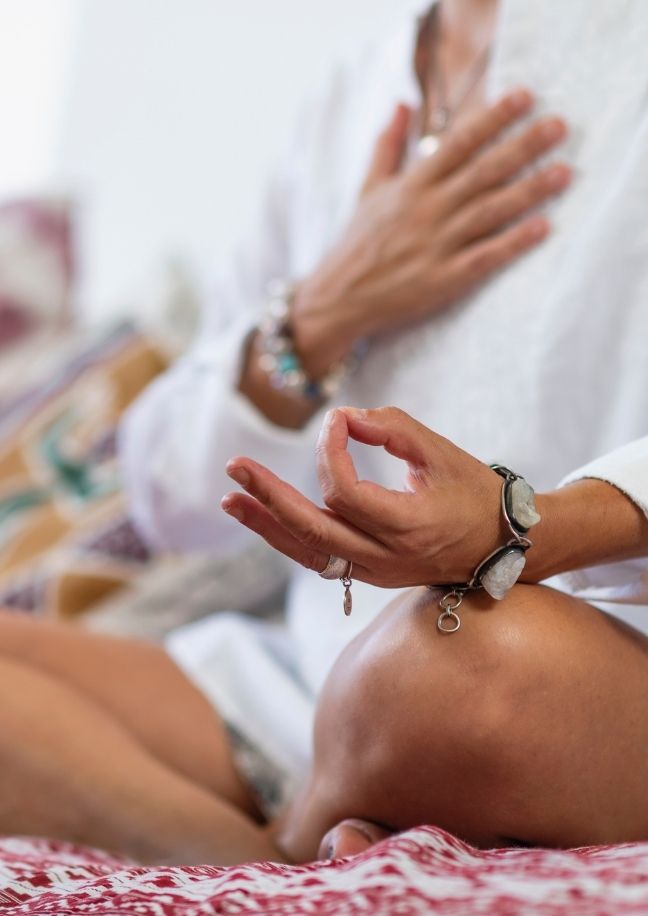
See Transcript
Welcome, dear meditators,
Before we begin this practice, it’s important to learn what contemplative meditation is. If you attended the session with your teacher and followed the practice “Contemplative meditation” then only it makes sense to begin this practice.
The objective of this practice is to be aware of your body. We know so much about the world but a very little about our own mind and body. This practice will help.
Let’s find a comfortable sitting or lying position. This practice is about your body. Begin by taking a deep breath, as if it’s your first breath of the day in the open.
Notice the path of this fresh air as it travels from the nostrils to the chest, belly, and the rest of the body. Feel the mist in the body. It’s revitalizing, isn’t it?
[Pause]
As you exhale, let the stiffness from the body dissolve in the air around you. Feel the immediate sense of calm in the body as if you were holding your breath for a long.
Continue this exercise until you feel absolutely calm and light.
Once you feel your body is ready for the exercise, take a gentle, shallow breath in, and let your awareness be in contact with the breath.
As we journey inward, I invite you to gently close your eyes if that feels right for you. Bring your awareness to your body, starting from the crown of your head and slowly scanning down to the tips of your toes. Notice any sensations or areas of tension without judgment or expectation.
Now, let’s deepen our mental gaze with each part of the body. Begin by bringing your attention to your head, noticing any sensations you may feel there. Perhaps there’s a sense of lightness or heaviness, warmth or coolness.
Whatever you experience, simply observe it with curiosity and openness.
Moving down to your neck and shoulders, notice any areas of tightness or holding. With each breath, allow these muscles to soften and relax, releasing any tension you may be holding onto.
Take a moment to note the state of your mind. How are you feeling at this moment? Pleasant, calm, agitated, or perhaps anxious.
Now, continue the exploration of your whole body. Notice how it behaves in relation to the state of your mind. Which parts of your body feel the most flow of energy if you are joyful or calm?
As you contemplate your body, you may also feel sensations arising in the mind from the awareness of the physical being. For example, If your mind is calm, then certain parts of your body will feel it the most, like your head, chest, or feet. From this realization that my body is calm, there will be a pleasant sensation in the mind, creating a loop of more calm like the creation of a snowball.
This is a beautiful analysis, but be mindful that this may roll the other way too, such as anxiety of being anxious and realizing it.
When you feel so, immediately disconnect your senses from your Consciousness, and the cycle will break.
As we bring this practice to a close, Take a mental note of each part of your body’s behavior in relation to the mind, as we can not isolate the body from the mind for contemplation. Everything happens in relation to each other.
May you be aware and watchful.
With love and gratitude.
